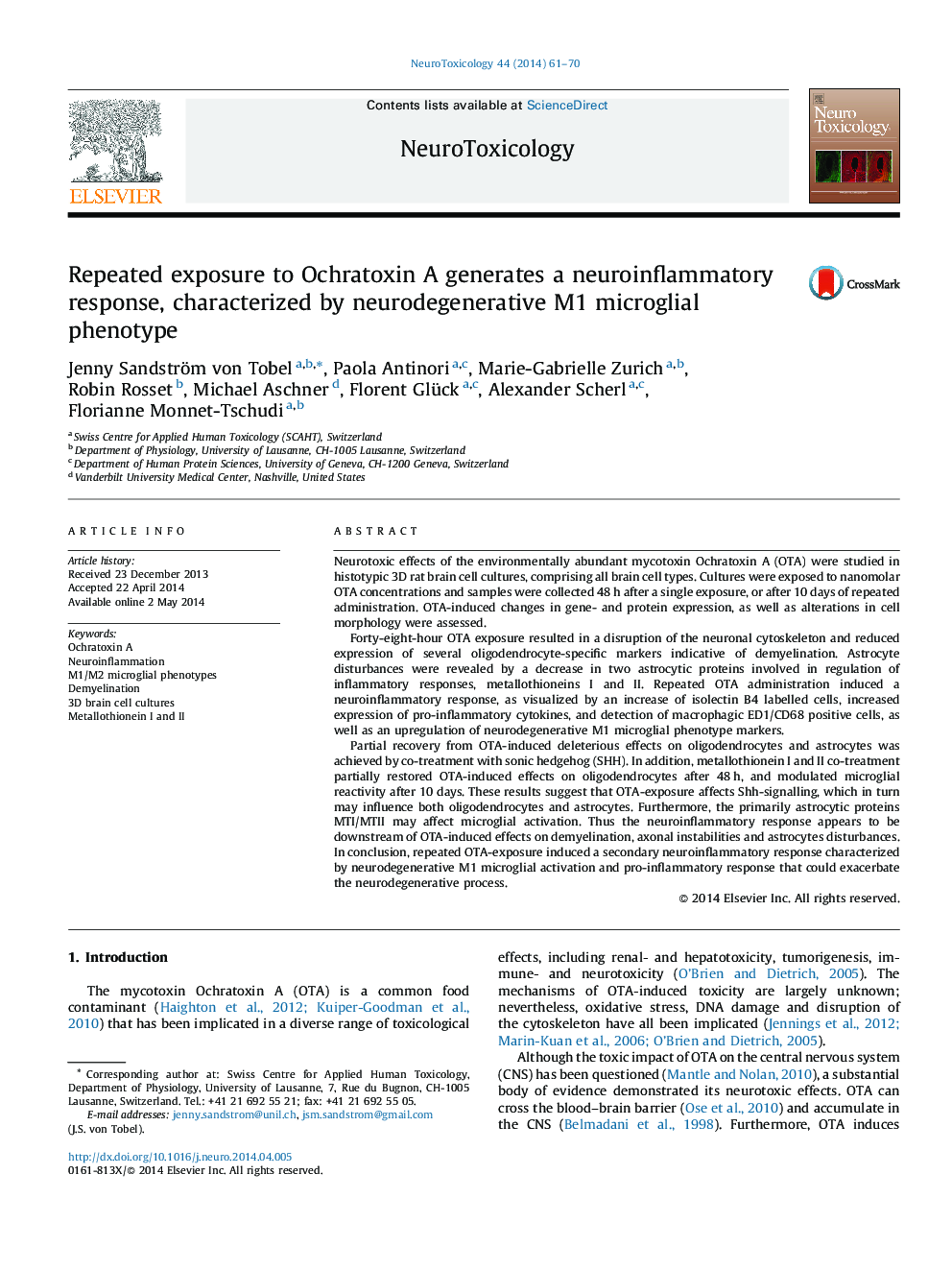| کد مقاله | کد نشریه | سال انتشار | مقاله انگلیسی | نسخه تمام متن |
|---|---|---|---|---|
| 2589660 | 1562050 | 2014 | 10 صفحه PDF | دانلود رایگان |

• Neurotoxic effects of Ochratoxin A (OTA) were examined in 3D aggregating rat brain cells.
• Acute OTA exposure induced neurocytoskeletal instabilities and demyelination.
• Acute OTA exposure interfered with normal astrocyte properties.
• Repeated OTA exposure induced microgliosis of neurodegenerative M1 phenotype.
Neurotoxic effects of the environmentally abundant mycotoxin Ochratoxin A (OTA) were studied in histotypic 3D rat brain cell cultures, comprising all brain cell types. Cultures were exposed to nanomolar OTA concentrations and samples were collected 48 h after a single exposure, or after 10 days of repeated administration. OTA-induced changes in gene- and protein expression, as well as alterations in cell morphology were assessed.Forty-eight-hour OTA exposure resulted in a disruption of the neuronal cytoskeleton and reduced expression of several oligodendrocyte-specific markers indicative of demyelination. Astrocyte disturbances were revealed by a decrease in two astrocytic proteins involved in regulation of inflammatory responses, metallothioneins I and II. Repeated OTA administration induced a neuroinflammatory response, as visualized by an increase of isolectin B4 labelled cells, increased expression of pro-inflammatory cytokines, and detection of macrophagic ED1/CD68 positive cells, as well as an upregulation of neurodegenerative M1 microglial phenotype markers.Partial recovery from OTA-induced deleterious effects on oligodendrocytes and astrocytes was achieved by co-treatment with sonic hedgehog (SHH). In addition, metallothionein I and II co-treatment partially restored OTA-induced effects on oligodendrocytes after 48 h, and modulated microglial reactivity after 10 days. These results suggest that OTA-exposure affects Shh-signalling, which in turn may influence both oligodendrocytes and astrocytes. Furthermore, the primarily astrocytic proteins MTI/MTII may affect microglial activation. Thus the neuroinflammatory response appears to be downstream of OTA-induced effects on demyelination, axonal instabilities and astrocytes disturbances. In conclusion, repeated OTA-exposure induced a secondary neuroinflammatory response characterized by neurodegenerative M1 microglial activation and pro-inflammatory response that could exacerbate the neurodegenerative process.
Journal: NeuroToxicology - Volume 44, September 2014, Pages 61–70